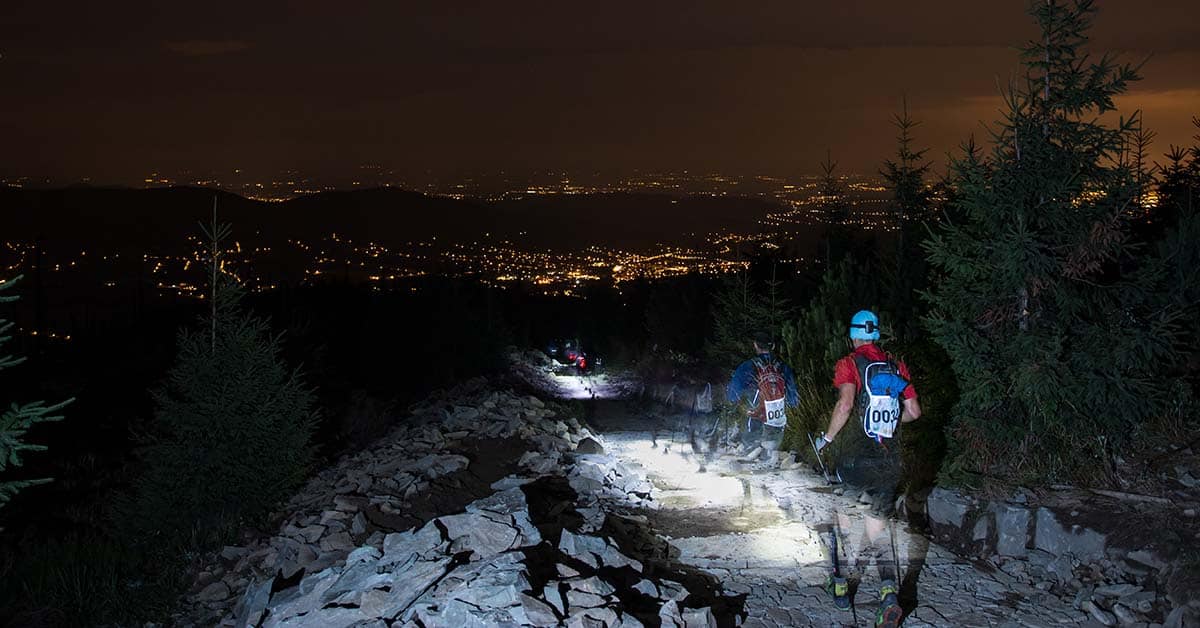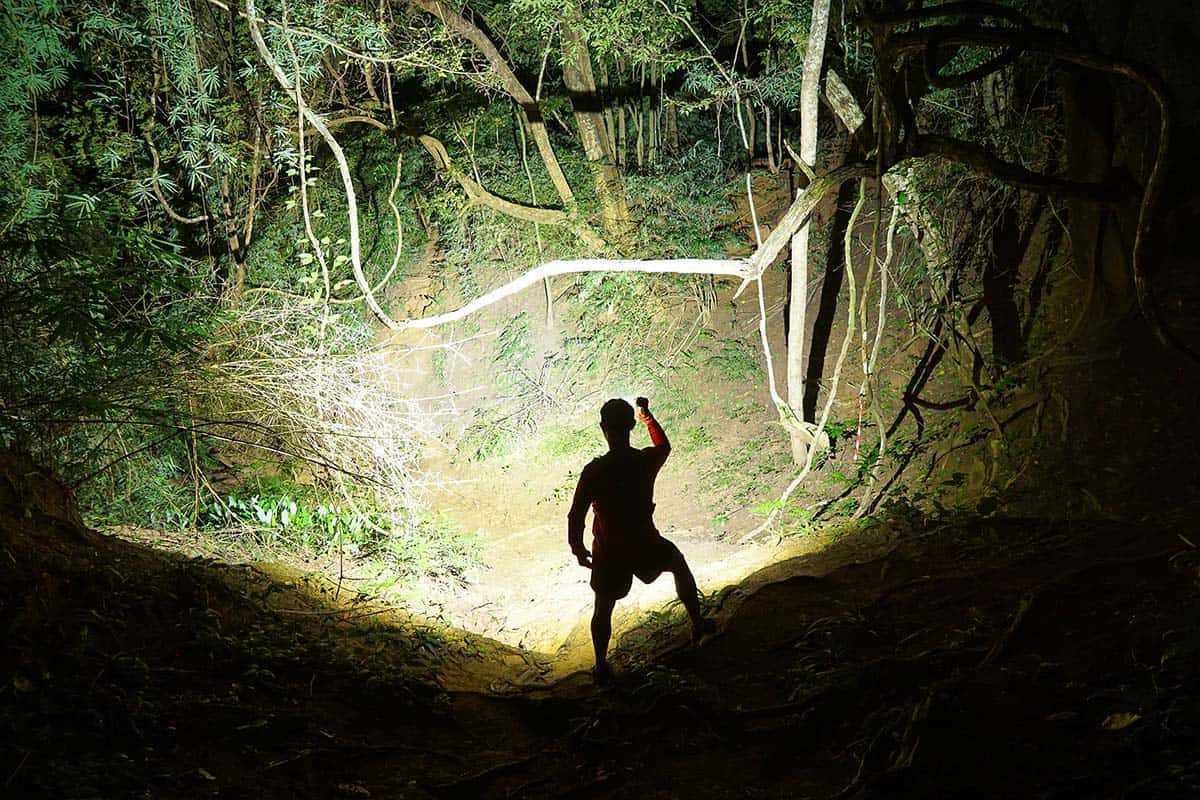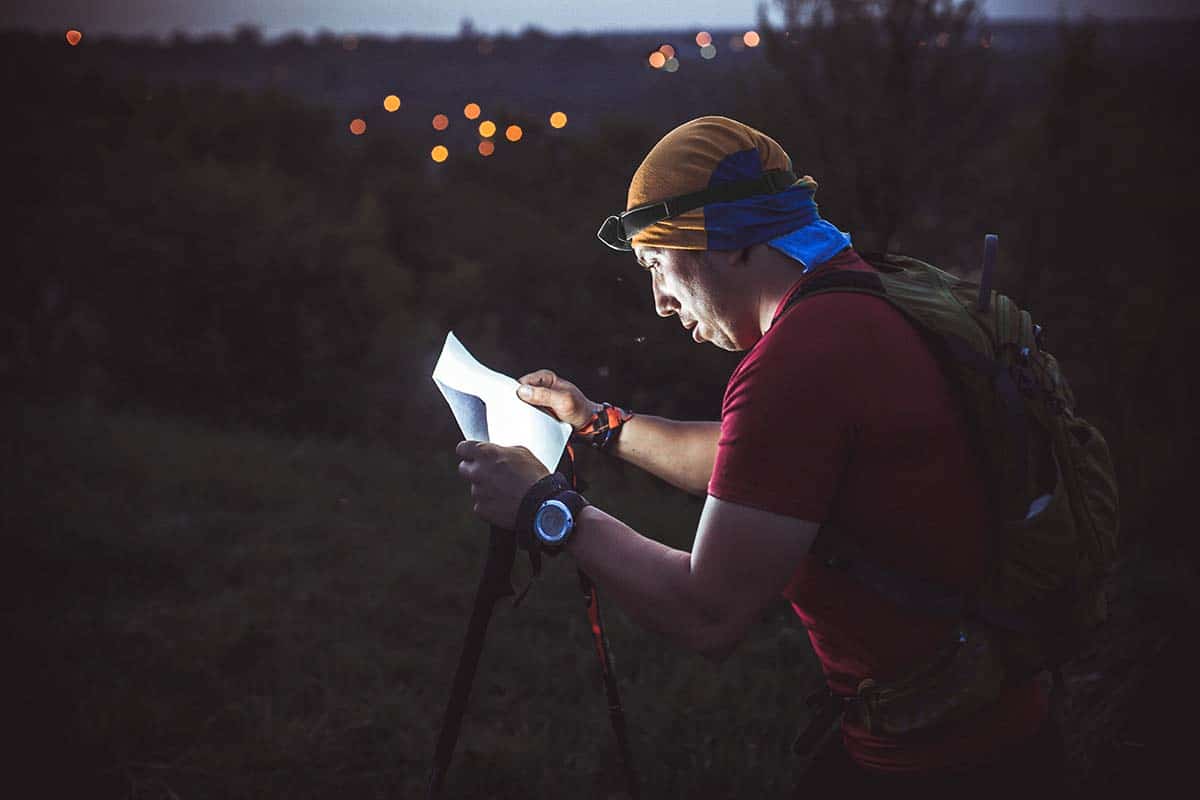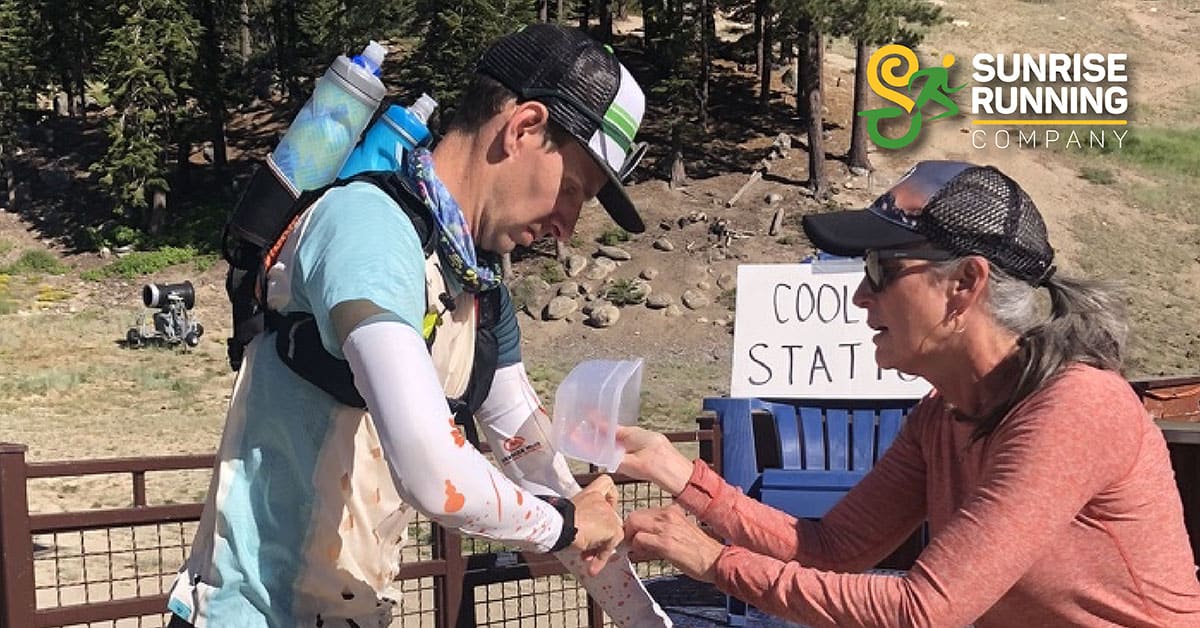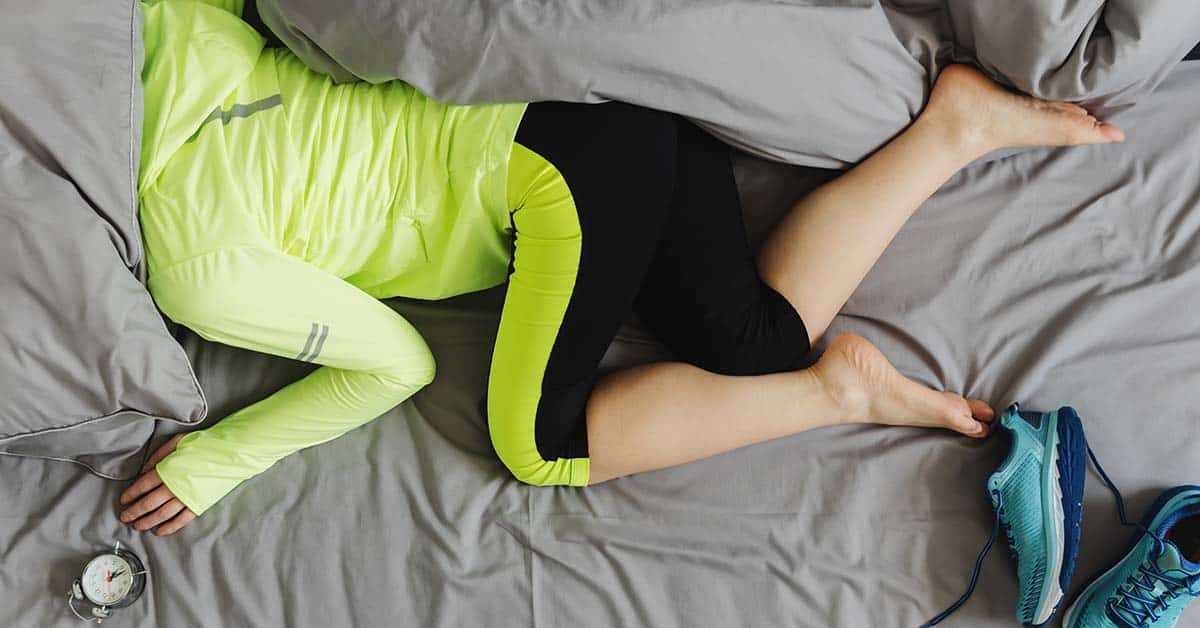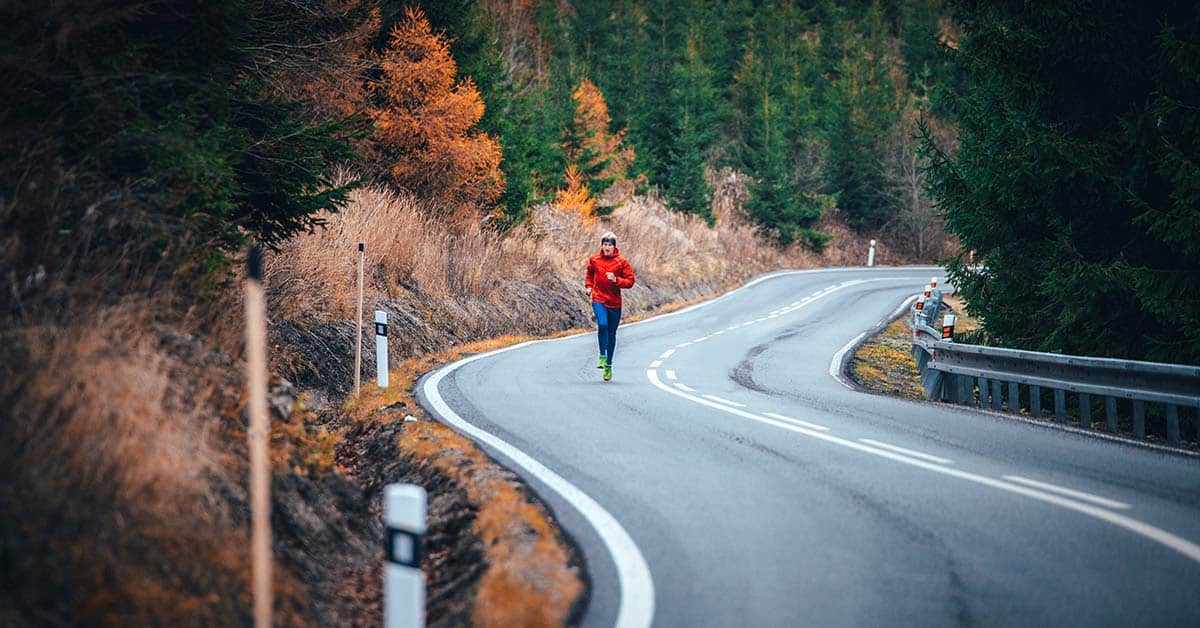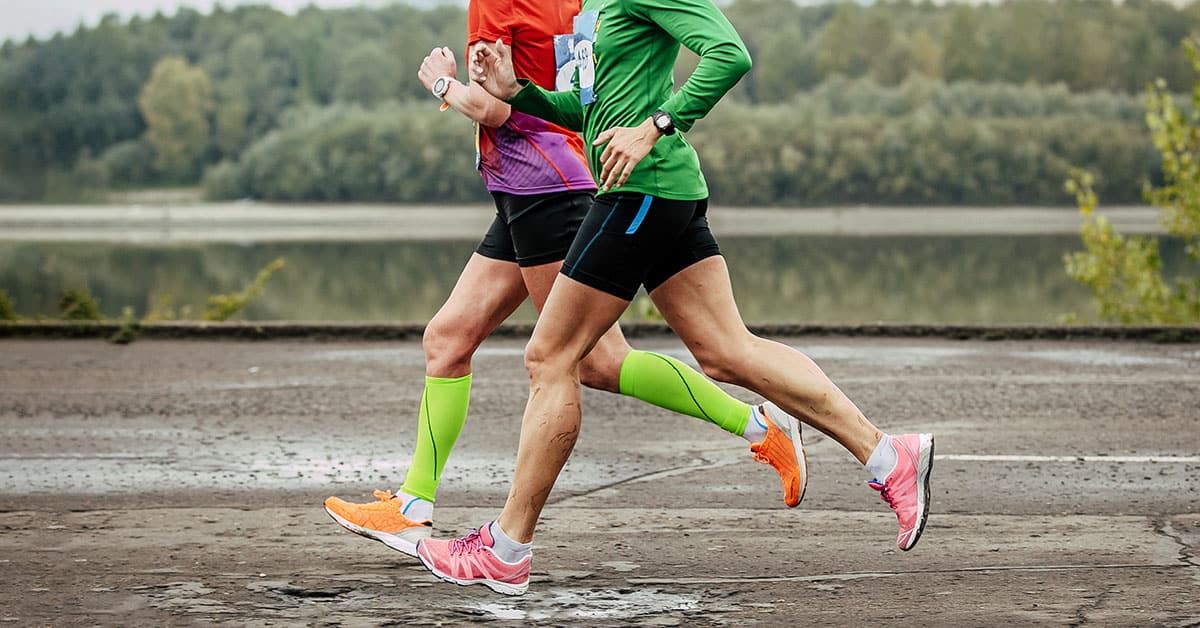Complete Guide for Trail Running at Night
A full moon illuminating the sky, an enhanced sense of solitude, coyotes howling in the distance—okay, maybe not the last one—make trail running at night magical. Though many people experience pure fear at every turn, night trail running has become very popular.
Trail running at night opens a new world of possibilities and experiences. The quiet night landscape will allow you to hear and see things you typically wouldn’t during the daylight hours. However, there is often a lot of intimidation and anxiety surrounding trail night running, and often, for rational reasons.
This article will shed light— no pun intended—on tips for trail running at night. As with all things, preparation and education are necessary to ensure an exciting and safe run. Whether you’re running for five minutes or all night long, you should prepare reasonably and think logically. Before you know it, you’ll find yourself lacing up your running shoes and heading out into the night.
Why would you consider trail running at night?
People seem to either be addicted to night trail running or too afraid to try it. However, despite being labeled the more dangerous option, trail runs at night are becoming more and more popular.
If you’ve never trail run at night, you might think those who do are crazy. However, there are several reasons why one chooses to head out for a run after sunset.
You have a busy schedule.
Life today is always on the go. We constantly balance work duties, family responsibilities, and social commitments, leaving little time for trail running.
Most people are booked and busy during the day. Nighttime is when they can relax from their long day at work, put their kids to sleep, and have a bit of free time. That is where the time for the run comes in.
Trail running at night instead of the day frees up a time slot in your busy schedule for other life responsibilities. You would no longer have to stress fitting the run between work and family commitments. Instead, you can ensure that the end of the day consists of you and the trail.
The air temperature is cooler at night.
It’s simple; no sun means cooler temperatures. This is an advantage to the runners living in areas with scorching hot daytime climates.
In the summertime, you’ll find trails filled with runners at night. They look to avoid the daytime heat and embrace the nighttime breeze. In addition, night running means no awkward tan lines!
If you’re embarking on a winter night trail run, you might have an issue with this one. The already cold day turning into an even colder night isn’t in everyone’s comfort zone, so a run in these conditions is often avoided.
Depending on the time of year, the days are shorter.
The winter doesn’t only bring cold temperatures, but it also brings short days. So, if you were starting to believe that trail running at night in the winter made no sense, think again.
Without even trying, you’re bound to find yourself running in the dark during the winter. Unfortunately, the days are too short not to. So, your after-work run is probably going to be at night.
Many people have initially been introduced to trail night runs thanks to the short days of winter. However, though it started unintentionally, many eventually fall in love with night trail running.
You are preparing for a race.
If you’re preparing for an upcoming race that may require trail running at night, you will want to gain some experience with it throughout your training program.
Trail running at night comes with its challenges, as seeing the path in front of you is difficult. However, heading out at night a few times leading up to your race will leave you feeling well prepared and confident when the sun goes down on race day.
Experience fewer distractions.
The soothing stillness of the night is often disregarded; however, trail running at night allows you to embrace its tranquility.
At night, your to-do list is almost fully accomplished. Everything from the traffic on your way to the trail to the number of people on it is minimized. The distractions are limited.
Due to the fewer distractions, you’ll become more aware of the trail’s environment. Not getting a complete sense of your surroundings eliminates external distractions and forces you to focus on your run. In addition, you’ll enter into a state of moving meditation as you decompress from the day.
Trail running at night can be fun.
Night trail runs feel less like a chore when you start appreciating them. The night sky’s darkness energizes you and provides experiences you don’t get during the day, like gazing at the stars.
The tunnel vision from running with your light beam is like playing a constant game of catch, similar to cats with their laser pointer. In addition, running daily in the afternoon could get boring, so switching it up brings back the excitement of trail running.
How to choose the proper light for trail running at night?
The most obvious obstacle you’ll face while trail running at night is darkness. On a night with clear skies and a full moon, you’ll find the path perfectly illuminated. However, if it’s cloudy, you’ll barely be able to see in front of you. In both cases, a good lighting source is necessary.
Your tunnel vision during the night trail run could be dangerous. There is a significant increase in the number of tripping hazards. In addition, as perception is altered, you won’t be completely aware of what’s going on around you. That is why having a good light source is vital.
One way of increasing depth perception and decreasing tunnel vision is by investing in an excellent hand-held torch or head torch. Waist lamps are also an option. You should be looking for specific qualifications when choosing your light gear for trail running at night. You want something better than the light on your phone.
Popular headlamps and flashlights.
One’s lighting of choice depends on the person’s preferences. However, there are a few that many runners find particularly useful and practical.
Good lighting is necessary to remain safe during trail runs at night; therefore, it is worth investing in a good one. Commonly used headlamps include the Foxelli USB Rechargeable Headlamp, Petzl IKO Core Headlamp, and Black Diamond Sprint 225. Some known flashlights are Nathan Terra Fire 300 Hand Torch and Fenix Outdoor LD30.
Headlamps are most used because they keep your hands free. They allow you to focus on your running form instead of aiming your light in a particular direction. However, some runners prefer flashlights over headlamps. They find that flashlights better illuminate the trail.
Some night trail runners prefer to use a combination of light sources. For example, they might use a headlamp with a hand-held flashlight for greater depth perception and less tunnel vision. This combination lights different angles and removes shadows.
It is sometimes advised or preferred to wear your head torch around your waist or sternum. For example, you can purchase waist belts or extension cables from manufacturers like Suprabeam.
A minimum output of 200 lumens.
When choosing a lighting source for trail running at night, you should pay attention to the lumens. Don’t get a headlamp or flashlight that doesn’t crank out at least 200 lumens at the highest setting.
Lumen refers to the measure of the light’s intensity or brightness. In other words, it describes the quantity of light that comes from a light source. For example, a lighting source with high lumens, 300 and up, is advised for nights with no stars.
The more the lumens, the more your eyes will thank you. Luckily, lighting technology has advanced dramatically, and you can now find lamps with 300 or more lumens for less than $100.
Comfortable to hold or wear while running.
Headlamps and flashlights vary significantly in weight and size. Trail running at night has enough obstacles on its own, so you want to ease the burden in any way possible. That’s why it’s best to choose a lighting source that is comfortable to wear or hold.
Headlamps should fit comfortably on your head and have minimal bounce. Often, lighter headlamps have a more comfortable feel.
As for a flashlight, its grip should be comfortable. Some flashlights come with optional strap systems that secure them and ease their grip.
Adjustable light beam width.
The beamwidth refers to the dispersion of light. Choose a light source with an adjustable beam width option.
Adjustable light beam width ranges from focused to wide. It gives you a wide flood option, suitable for peripheral vision, and the spot option, which helps you see farther down the trail.
Adjustable brightness levels.
If you want a light source useful in multiple situations, get one with adjustable brightness levels. The levels could have more than just low, medium, and high settings. While many are manually adjusted, some lamps have technologies that allow automatic adaptation to the surrounding light. This means that when you look at your watch, you won’t be blinded by the reflection.
Several brightness levels exist and are used depending on the need. For example, if you’re looking off into the distance, you can make the light brighter, and if you’re looking at something up close, you can make it dimmer.
Rechargeable battery.
If you’ve asked anyone for trail night running lighting recommendations, you’ve probably been told to get one with a rechargeable battery. It makes things easier.
Most headlamps and flashlights today feature USB rechargeable batteries. This means you don’t have to dig around to find batteries every couple of weeks. Instead, plug it in after every run and let it charge.
What cautions to take when trail running at night?
Trail running at night is more hardcore than daytime running. With fewer people around in the darkness, certain precautions are necessary to ensure the safety and quality of your night trail run.
Plan and know your route.
If you get lost during the day, it’s easy to find and get back on the correct route. However, it’s challenging to navigate your trail without sunlight.
Make sure to study your route before you leave the house. You should know how to navigate your trail at all times. In addition, use a GPS device, your phone, map, or compass to ensure you’re going the right way. Make sure to have your devices fully charged with no chance of them turning off during your run.
Before going at night, run on the trail a couple of times during the day. In remote areas, stick to the safe path that is easy to navigate. Always plan shortcuts.
Slow down your running pace.
If you were looking to go full speed, trail running at night isn’t for you. Night running on trails requires you to slow down.
Trail running at night requires a slow pace with smaller and more lifted footsteps. This reduces your risk of tripping on uneven ground. Tempo efforts should be used on smooth, secluded trails that you know very well.
Don’t be discouraged. The trail runs at night give you the opportunity to work on your form rather than your speed. You’ll then focus on your posture and gain some solid abs and glutes on the way.
Bring your cellphone.
Do not leave your phone at home. You might see its weight as a burden, but it’s necessary for your safety.
Make sure to carry your phone on night trail runs. Sometimes you have cell service, and sometimes you don’t, but regardless, your phone is necessary. In case you get lost or twist an ankle, you’ll be able to call for help.
However, do not be reliant on it. Without service and battery, the cell phone will be useless to you. Don’t allow it to give you a false sense of protection. Never go out without proper preparation.
Leave the headphones and music at home.
Don’t put your headphones in during a night trail run. It’s best always to be aware of your surroundings. You already have reduced vision, don’t compromise your hearing too. You don’t want to block the noises of other trail users, wildlife, or any other possible source of danger.
Dress appropriately for changing conditions.
Part of being prepared is dressing appropriately for the run. The clothes you wear should protect you from harsh weather keep you visible, comfortable, and ready for the trails.
As mentioned earlier, the weather gets colder at night, so make sure to put on extra layers and pack extra clothes just in case. It’s best if the clothes are waterproof and harsh weather resistant.
In addition, wear bright colors and make sure your clothing is reflective. Also, it would be best if you had trail running shoes that can deal well with rough, uneven grounds. Again, make sure that they are made of reflective material.
Bring a friend or plan a group run.
If you’re nervous about your first trail run at night, consider taking a friend with you. Going with a friend could be great for safety and entertainment purposes.
Trail running at night with a friend could protect you from human dangers and wildlife as you have an extra set of ears and eyes. If no friend agrees to go with you, there are many race organizations that you could go with.
Be ready for wildlife.
The wildlife that shies away during the day comes out to play at night. During the run, you’ll probably hear animals in the distance.
It is crucial to be prepared to ward off any uninvited animals. Carry a sort of siren with you which can be heard from blocks away. If necessary, you could also carry bear spray. In addition, make sure to take a self-defense tool with you.
Tell someone where you’re going.
It’s advised to never go for a run on the trails without telling someone first. This applies equally to running at night and during the day.
Let a family member or a friend know where you’re headed. Tell them the details of your run, like when you’ll start and return. In addition, show them the route you’re going on. Finally, let them know who will be accompanying you.
Final thoughts.
There are several reasons to choose to go trail running at night instead of the day. It could be due to a busy schedule, cooler temperatures, shorter days, preparation for an upcoming race, fewer distractions, or just for fun.
Trail running at night requires a good lighting source. You can invest in a headlamp or flashlight that you know works well, has a minimum output of 200 lumens, is comfortable to wear or hold, has an adjustable beam width, adjustable brightness level, and a rechargeable battery.
Safety should be a priority. Never go on a trail run at night without being fully prepared. Make sure to know your route, slow down, take your cell phone, leave the headphones at home, dress appropriately, bring a friend, be ready for wildlife, and let someone know where you’re going.
A Training Plan that Works for You.
Our collection of running plans will help you train year-round. From 5k to a 100-mile ultramarathon, we have a training plan built for your experience level and goals. Every plan is delivered via Final Surge, allowing you to sync workouts across devices, receive daily reminders of workouts and activities, and analyze workout and target zone details. Get started today with a training plan built for you, view our running plans here.


